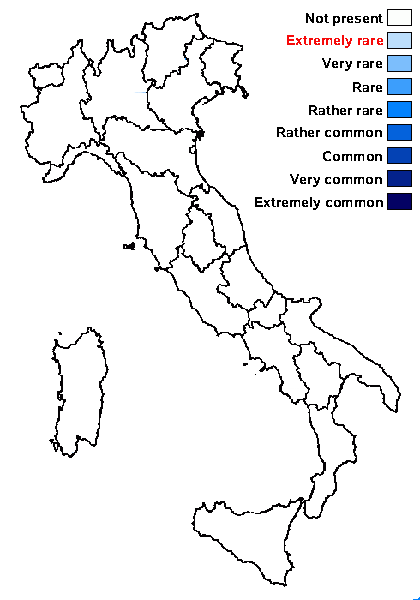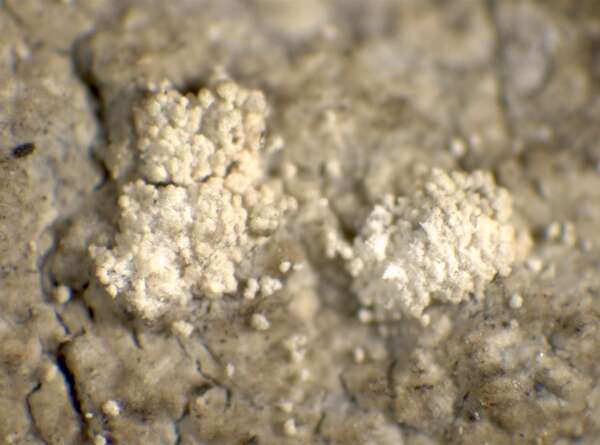Ochrolechia bahusiensis H. Magn.
Bot. Notiser: 115, 1927
Synonyms: Ochrolechia subviridis (Høeg) Erichsen f. pulverulenta Erichsen; Ochrolechia subviridis (Høeg) Erichsen var. lignaria (Erichsen) Erichsen
Distribution:
Description: Thallus crustose, episubstratic, usually thin (50–150 μm), well-delimited, white-grey, pale brownish grey or dark grey, with small, regular, usually well-separated tubercles of different sizes, often delimited by a thin whitish prothallus, sorediate. Soralia usually well-delimited, later sometimes confluent, rounded to irregular, convex, grey, cream-coloured, yellowish grey, or concolorous with thallus; soredia farinose, sometimes gathered into corticate, isidia-like consoredia. Apothecia rare, lecanorine, up to 2 mm across, rounded to irregular in outline, with a concave to flat, pale to dark brown disc, and a thick, even or flexuose, sometimes sorediate thalline margin. Thalline exciple corticate, with a well-differentiated medulla; proper exciple usually clearly visible also macroscopically, especially in young apothecia, forming a distinct, salmon-coloured excipular ring around the disc; epithecium pale brown, C+ red; hymenium colourless, up to 300 μm high; paraphyses thin, densely branched and anastomosing; hypothecium colourless to yellowish. Asci (4-)8-spored with thick, amyloid walls, without recognizable apical structures, Pertusaria-like. Ascospores 1-celled, hyaline, ellipsoid, broadly ovoid or rarely subglobose, (25-)30-55 x (12-)15-29 µm. Photobiont chlorococcoid. Spot tests: thallus (cortex) K-, C+ red, KC+ red, P-; medulla C-, KC-. Chemistry: cortex with gyrophoric acid and 2-3(-4) fatty acids of the murolic acid complex (major), lecanoric acid (minor or traces), rarely atranorin (traces). Note: an epiphytic species morphologically resembling O. arborea, but with a different secondary chemistry (murolic acid syndrome, gyrophoric acid syndrome), and therefore soralia UV-; mostly on the bark of deciduous trees in various forest types; widespread in Europe, but not consistently distinguished, and distribution therefore incompletely known. To be looked for in Italy.
Growth form: Crustose
Substrata: bark
Photobiont: green algae other than Trentepohlia
Reproductive strategy: mainly asexual, by soredia, or soredia-like structures (e.g. blastidia)

Predictive model
Growth form: Crustose
Substrata: bark
Photobiont: green algae other than Trentepohlia
Reproductive strategy: mainly asexual, by soredia, or soredia-like structures (e.g. blastidia)

Predictive model
 Index Fungorum
Index Fungorum
 GBIF
GBIF




